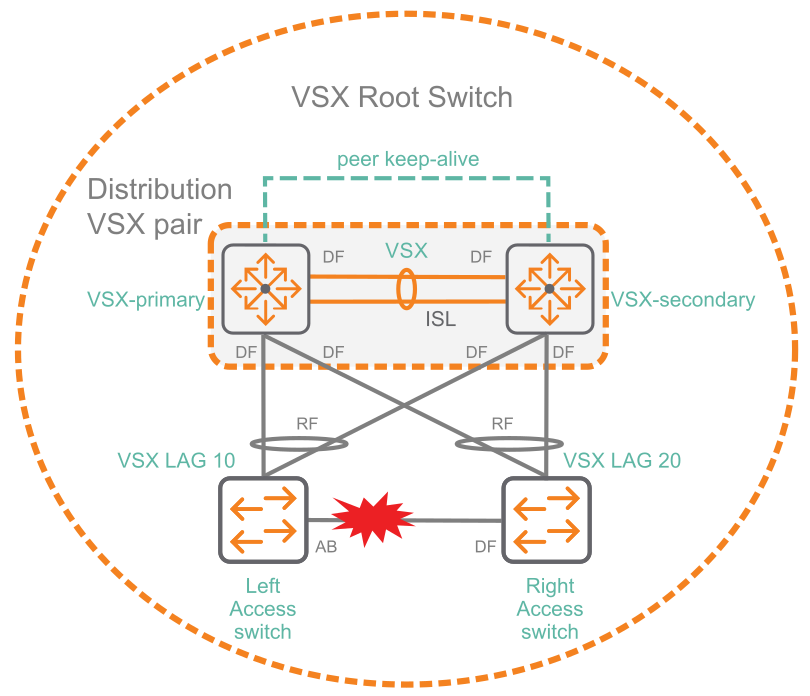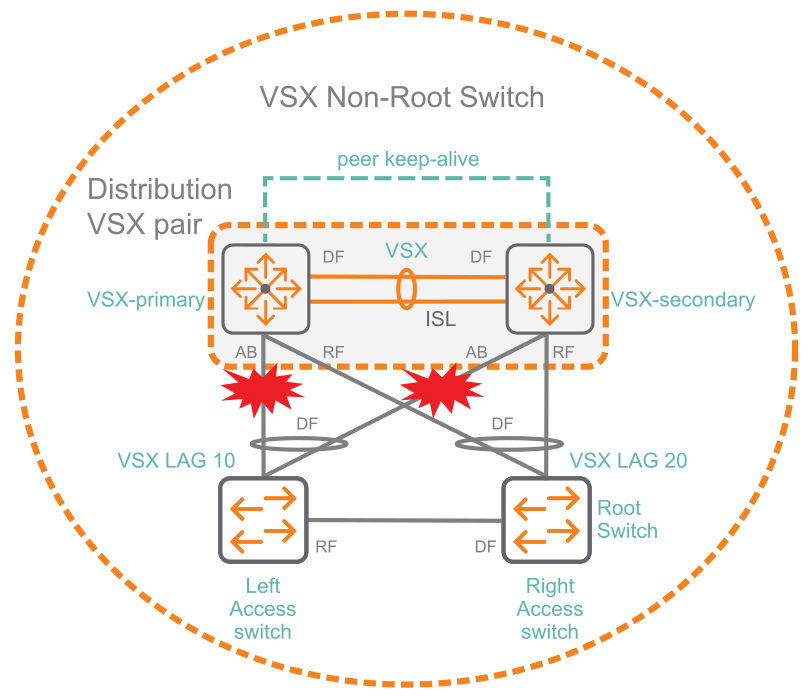VSX switch with RPVST, as root and nonroot
In the following figure, the VSX pair is configured as a root switch. All the ports of the VSX LAGs, non-VSX LAGs, and orphan ports are in a forwarding state. Bridge Protocol Data Units (BPDUs), generated by a VSX pair, are the same on all ports, including VSX LAG, non-VSX LAG, and orphan. All switches must be in the same MSTP region consisting of the same configuration name and revision number, as set by the
spanning-tree config-name
<CONFIG-NAME> and
spanning-tree config-revision
<REVISION-NUMBER> commands.
| Abbreviation | Definition |
|---|---|
| AB | Alternate blocking; the port is in a blocked state. |
| DF | Designated forwarding; the port is in a forwarding state. |
| RF | Root forwarding; the port is in a forwarding state. |
For one RPVST instance:
switch(config)# spanning-tree vlan 1 priority 1For more than one RPVST instance:
switch(config)# spanning-tree vlan 1-100 priority 1

In the following figure, the VSX pair is not a root switch for STP topology. One of the VSX LAG ports is in the blocking state for resolving an L2 network loop. The VSX LAG port is in a blocking state on both VSX peer switches.
